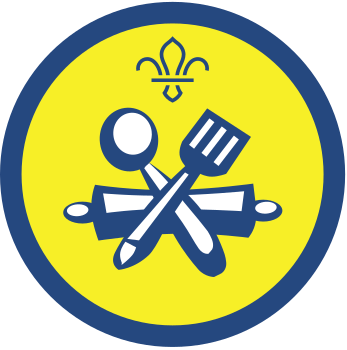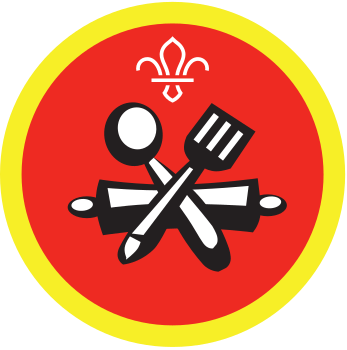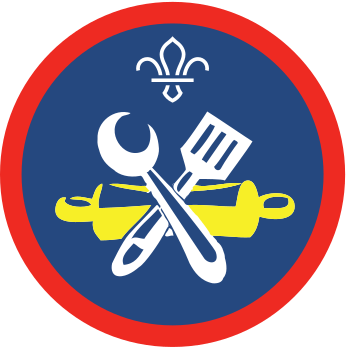
Bake Irish soda bread
You’ll need
- Large bowl
- Weighing scales
- Sieve
- Wooden spoons
- Access to oven and sink
- Ingredients for bread (see recipe card)
- Tables
- Protective equipment, such as heatproof gloves and tea towel
Before you begin
- Use the safety checklist to help you plan and risk assess your activity. There's also more guidance to help you carry out your risk assessment, including examples.
- Make sure all young people and adults involved in the activity know how to take part safely.
- Make sure you’ll have enough adult helpers. You may need some parents and carers to help.
Using a kitchen and preparing to cook
- You could run our kitchen safety and hygiene activities, Kitchen risk bingo and Home kitchen hygiene prior to running this session.
- Remember to have a hand washing station and take extra hygiene precautions when handling raw meat, such as regular hand washing, having separate equipment for raw and cooked meat, and washing up equipment as soon as it's been used. Take a look at our guidance on food preparation.
- Make sure you have all the ingredients ready.
- Remember to check your ingredients against any allergy or dietary requirements to ensure everyone can enjoy the recipe. This may mean using alternative ingredients.
Having a safe cooking source
- Make sure that everyone’s fires have been built outdoors in clear, open areas, with plenty of ventilation, and away from any areas where people will be sleeping.
- All the fires need to burn down to hot embers before they can start cooking. This increases the chance of the fuel burning without enough oxygen present, increasing the risk of carbon monoxide exposure. We’ve more guidance on different cooking methods.
- If using a gas stove, make sure it’s on a stable heatproof surface and in a clear and open area, with plenty of ventilation.
March 17 marks the feast day of St. Patrick, patron saint of Ireland. Born in Roman Britain in the late 4th century, he was kidnapped at the age of 16 and taken to Ireland as a slave. He escaped but returned about 432 CE to convert the Irish to Christianity.
By the time of his death on March 17, 461 CE, he had established monasteries, churches, and schools. Many legends grew up around him—for example, that he drove the snakes out of Ireland and used the shamrock to explain the Trinity. Ireland came to celebrate his day with religious services and feasts.
Ingredients
- 170g wholemeal flour
- 170g plain flour, plus extra for dusting
- ½ teaspoon salt
- ½ teaspoon bicarbonate of soda
- 290ml buttermilk
Prep time: 30 minutes
Cook time: 15 minutes
Makes: 1 loaf
Setting up the activity
- An adult volunteer should preheat the oven to 200°c/180°c fan/Gas mark 6.
- Put out any tables you might be using, along with ingredients, copies of the recipe and equipment.
Running the activity
- Split everyone into groups of four and ask everyone to wash their hands.
- Gather everyone together and tell them you’re going to make Irish soda bread. You may be doing this activity to celebrate St Patrick’s Day.
- Everyone should take their bowl and recipe.
- Sieve both flours into a large bowl.
- Now add the bicarbonate of soda and salt into the large bowl with the flour and mix well.
- Make a small well in the centre.
- Pour the buttermilk into the well. Mix it in quickly to form a soft dough. The dough shouldn’t be too sticky. If it is, add a small amount of flour. If the dough is too stiff, add a small amount of milk.
- Lightly flour the table and place your dough on it.
- Knead the bread for around five minutes. This can be done by pushing the dough away from you with the bottom of your palm, folding the dough over itself with your fingers, and pulling it back. You then repeat the process.
- Shape the dough into a circle, place it on your baking tray and cut a small cross on the top.
- Bake the bread for around 30 minutes. You may want an adult volunteer to cook all the breads while young people take part in another activity, depending on if you can run both activities in-line with the Yellow Card and ratios.
- When the bread is ready an adult volunteer should bring it out of the oven and place it on a heatproof surface, away from young people. Let it cool for a few minutes before transferring to a wire rack to cool completely. To check if the bread is ready you can tap on it, and it should sound hollow.
- Once cooked, everyone can give their bread a try – perhaps with some butter – or people may want to take them home and that’s OK, too.
- Remember that everyone can get involved in tidying and washing up afterwards.
Reflection
This activity gave everyone the opportunity to try something new and work as a team to bake some Irish soda bread. Have you made bread before? How easy was the bread to make? Were there any parts which were easier than others?
Everyone’s bread will turn out slightly differently. How did each group's baking go? How did you support the other groups if they needed help? Would you bake bread again? If so would you make a different type of bread?
Safety
All activities must be safely managed. You must complete a thorough risk assessment and take appropriate steps to reduce risk. Use the safety checklist to help you plan and risk assess your activity. Always get approval for the activity, and have suitable supervision and an InTouch process.
- Cooking
Teach young people how to use cooking equipment safely. Supervise them appropriately throughout. Make sure it’s safe to use and follow manufacturers’ guidelines for use.
- Food
Remember to check for allergies, eating problems, fasting or dietary requirements and adjust the recipe as needed. Make sure you’ve suitable areas for storing and preparing food and avoid cross contamination of different foods. Take a look at our guidance on food safety and hygiene.
- Sharp objects
Teach young people how to use sharp objects safely. Supervise them appropriately throughout. Store all sharp objects securely, out of the reach of young people.
Instead of making multiple loaves, make one as a whole group making sure you give everyone the opportunity to help make the bread, then divide it equally when cooked.
- If anyone doesn’t feel confident in touching the raw dough, give them the opportunity to help in other ways by measuring out the ingredients or putting the ingredients in the bowl.
- There are lots of different jobs that need doing when planning, making, and cooking. There’s a role for everyone, so encourage everyone to be involved in a way that works for them.
- If anyone needs help or struggles with fine motor skills, give them the opportunity to work in pairs, with a young leader or an adult volunteer. Alternatively, swap out the items for something easier to handle.
- Remember to check for allergies or dietary requirements and adjust the recipe as needed.
All Scout activities should be inclusive and accessible.
Now you’ve made your bread, think about what you could use the bread for. You could have it with some homemade soup, in sandwiches or as toasties, or on its own with a bit of butter.
If anyone has made bread before, give them the opportunity to help the other groups.



